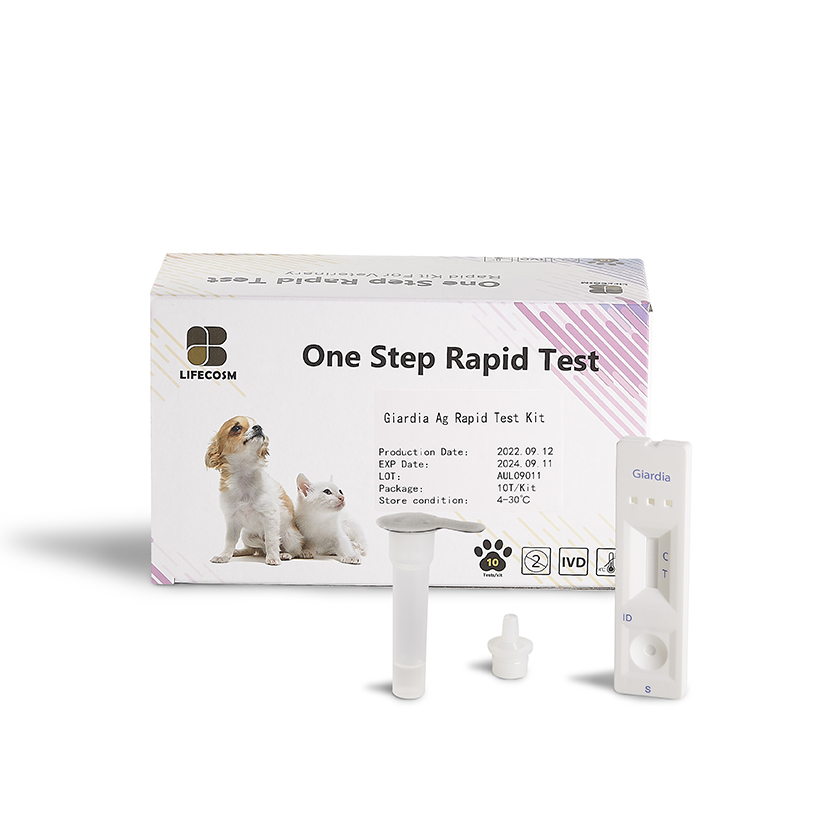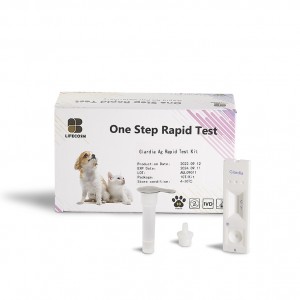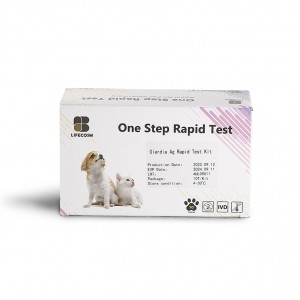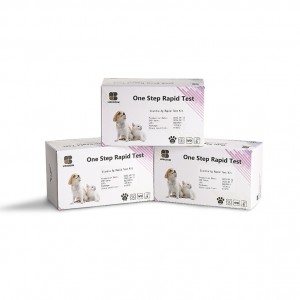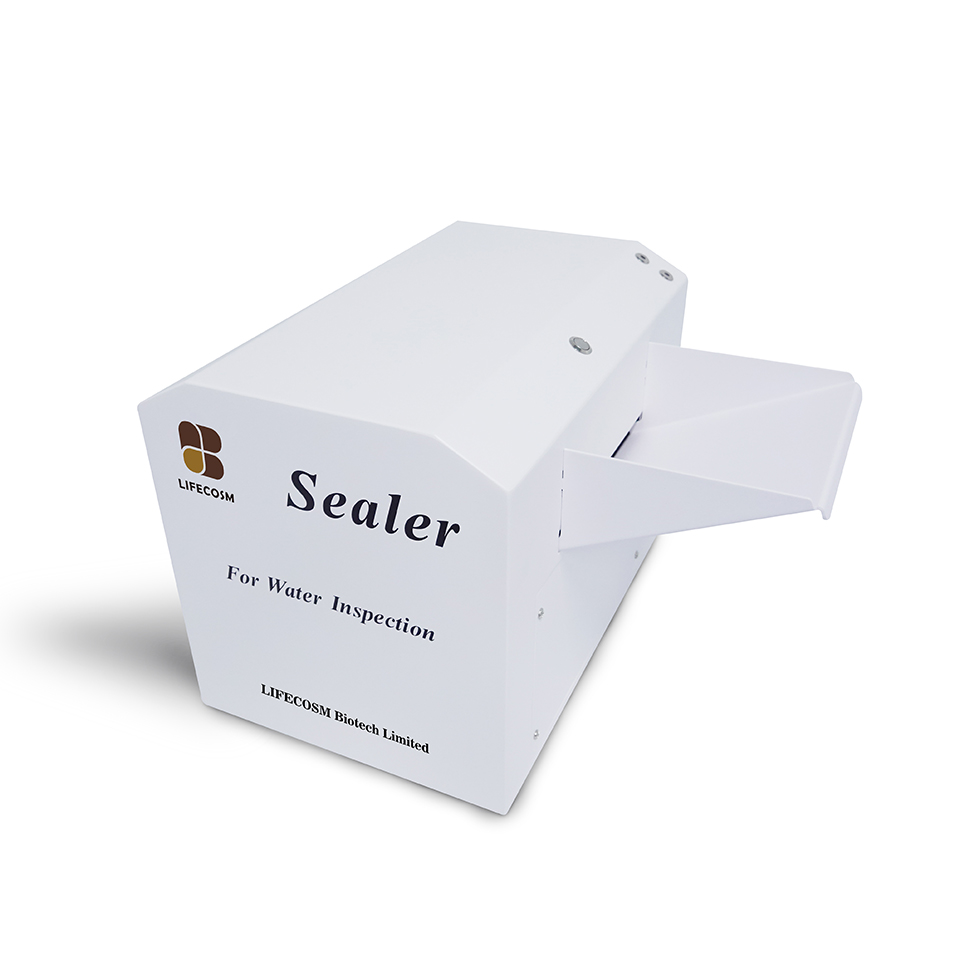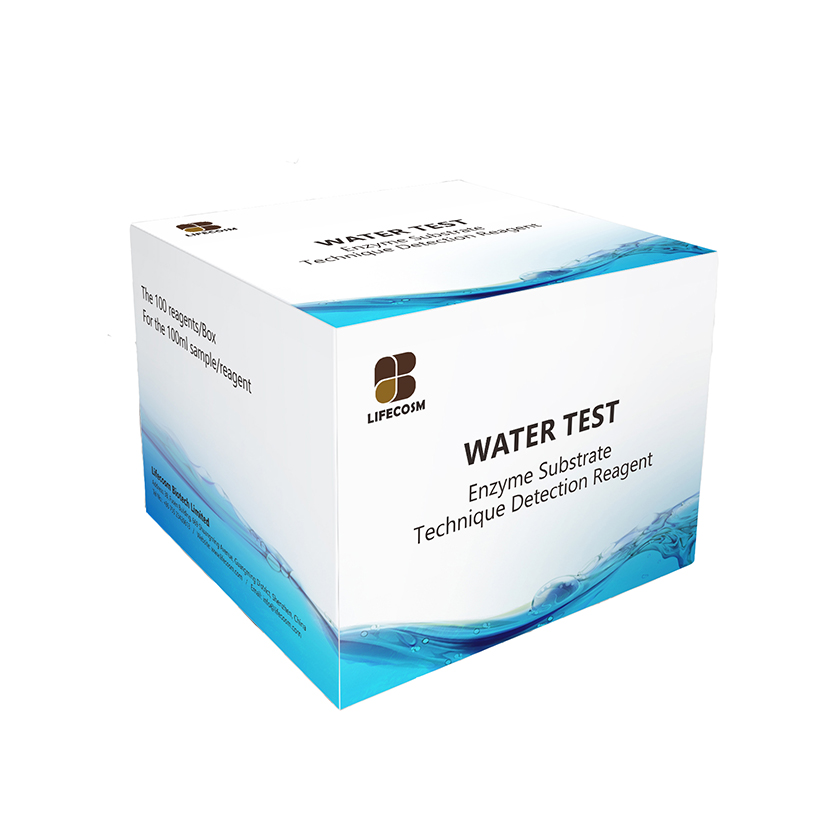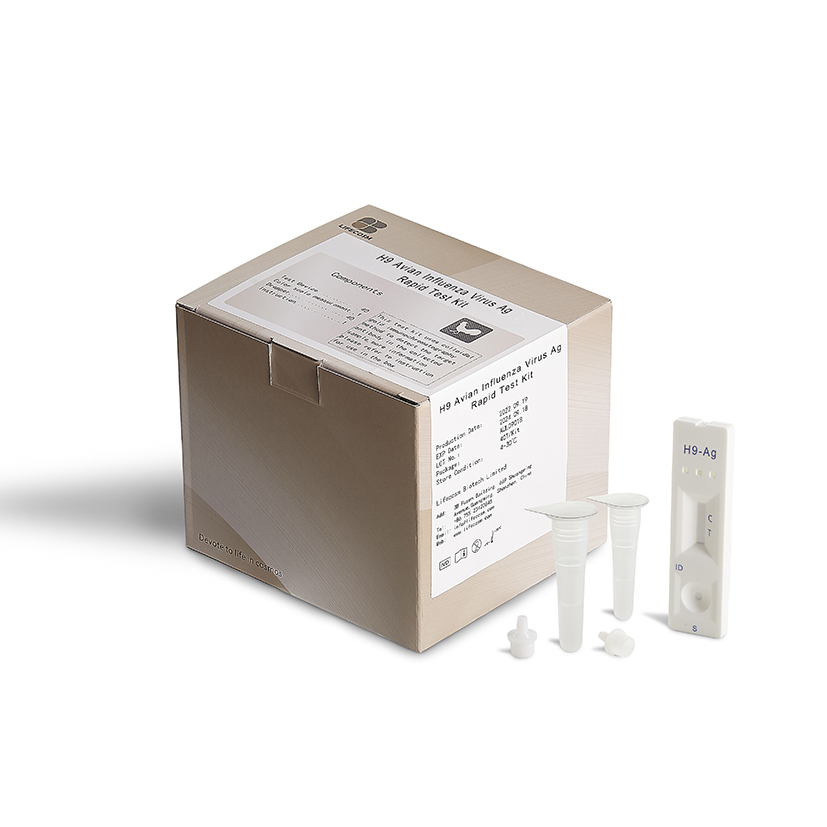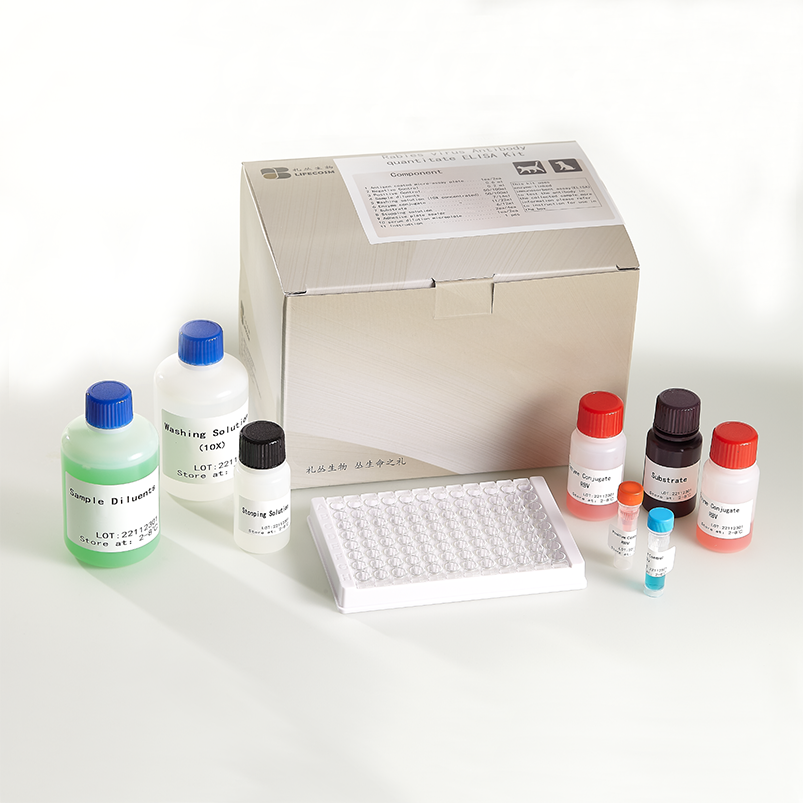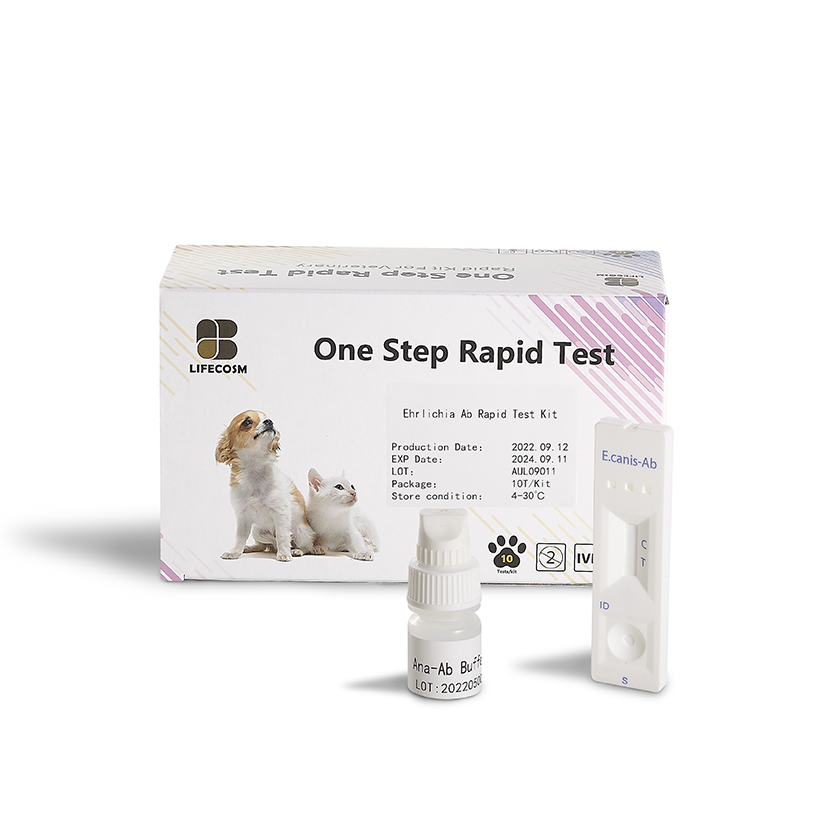
Products
Lifecosm Giardia Ag Test Kit
GIA Ag Test Kit
| Giardia Ag Test Kit | |
| Catalog number | RC-CF22 |
| Summary | Detection of specific antigens of Giardia within 10 minutes |
| Principle | One-step immunochromatographic assay |
| Detection Targets | Giardia Lamblia antigens |
| Sample | Canine or Feline feces |
| Reading time | 10 ~ 15 minutes |
| Sensitivity | 93.8 % vs. PCR |
| Specificity | 100.0 % vs. PCR |
| Quantity | 1 box (kit) = 10 devices (Individual packing) |
| Contents | Test kit, Buffer bottles, Disposable droppers, and Cotton swabs |
| Caution | Use within 10 minutes after opening Use appropriate amount of sample (0.1 ml of a dropper) Use after 15~30 minutes at RT if they are stored under cold circumstances Consider the test results as invalid after 10 minutes |
Information
Giardiasis is an intestinal infection caused by a parasitic protozoan (single celled organism) called Giardia lamblia. Both Giardia lamblia cysts and trophozoites can be found in the feces. Infection occurs by the ingestion of Giardia lamblia cysts in contaminated water, food, or by the fecal-oral route (hands or fomites). These protozoans are found in the intestines of many animals, including dogs and humans. This microscopic parasite clings to the surface of the intestine, or floats free in the mucous lining the intestine.
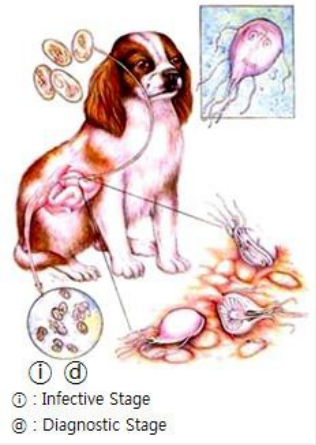
Life Cycle
The Giardia lamblia life cycle begins when cysts, the resistant forms of the parasite responsible for transmitting the diarrheal illness known as giardiasis, are accidentally ingested. Once the parasite is in the small intestine, the Giardia lamblia life cycle continues as it releases trophozoites (protozoan in the active stage of its life cycle) that multiply and remain in the intestine. As the trophozoites mature in the intestine, they simultaneously migrate toward the colon, where they become thick-walled cysts again.
Symptoms
The trophozoites divide to produce a large population, then they begin to interfere with the absorption of food. Clinical signs range from none in asymptomatic carriers, to mild recurring diarrhea consisting of soft, light- colored stools, to acute explosive diarrhea in severe cases. Other signs associated with giardiasis are weight loss, listlessness, fatigue, mucus in the stool, and anorexia. These signs are also associated with other diseases of the intestinal tract, and are not specific to giardiasis. These signs, together with the beginning of cyst shedding, begin about one week post-infection. There may be additional signs of large intestinal irritation, such as straining and even small amounts of blood in the feces. Usually the blood picture of affected animals is normal, though occasionally there is a slight increase in the number of white blood cells and mild anemia. Without treatment, the condition may continue, either chronically or intermittently, for weeks or months.
Diagnosis and Treatment
Cats can be cured easily, lambs usually simply lose weight, but in calves the parasites can be fatal and often are not responsive to antibiotics or electrolytes. Carriers among calves can also be asymptomatic. Dogs have a high infection rate, as 30% of the population under one year old are known to be infected in kennels. The infection is more prevalent in puppies than in adult dogs. This parasite is deadly for chinchillas, so extra care must be taken by providing them with safe water. Infected dogs can be isolated and treated, or the entire pack at a kennel can be treated together regardless. There are several options of treatment , some with two- or three-day protocols and others needing seven-to-10 days to complete the job. Metronidazole is an old stand-by treatment for bacterial infestations that cause diarrhea and is about 60-70 percent effective in curing giardiasis. However, Metronidazole has potentially serious side-effects in some animals, including vomiting, anorexia, liver toxicity, and some neurological signs, and it cannot be used in pregnant dogs. In a recent study, Fenbendazole, which is approved for use in treating dogs with roundworm, hookworm, and whipworm, has been shown to be effective in treating canine giardiasis. Panacur is safe to use in puppies at least six weeks of age.
Prevent
In large kennels, mass treatment of all dogs is preferable, and the kennel and exercise areas should be thoroughly disinfected. Kennel runs should be steam-cleaned and left to dry for several days before dogs are reintroduced. Lysol, ammonia, and bleach are effective decontamination agents. Because Giardia crosses species and can infect people, sanitation is important when caring for dogs. Kennel workers and pet owners alike should be sure to wash hands after cleaning dog runs or removing feces from yards, and babies and toddlers should be kept away from dogs that have diarrhea. When traveling with Fido, owners should prevent him from drinking potentially infected water in streams, ponds, or swamps and, if possible, avoid public areas polluted with feces.

